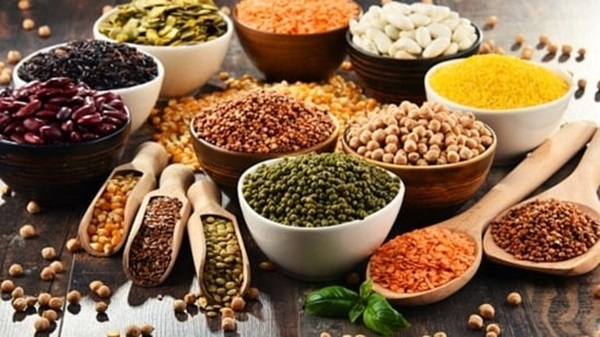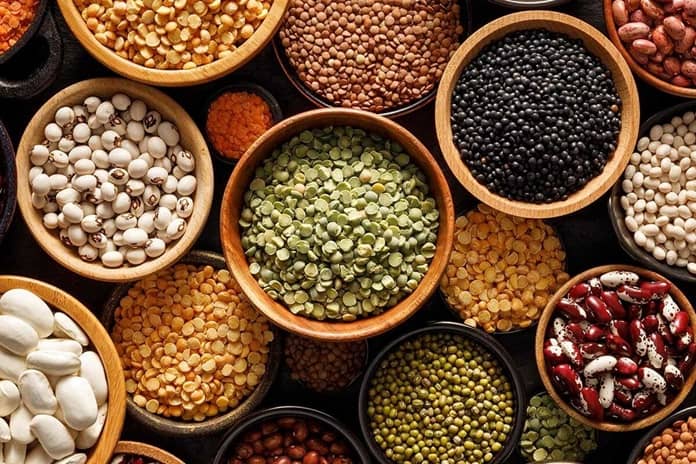World Pulses Day is celebrated on February 10 every year. It is an annual global event established by the United Nations in 2018 to honour the significance and nutritional benefits of pulses (also known as “legumes”). Likewise, the U.N. believes that are not only nutritious sources but also can help to improve sustainable food systems towards eradicating world hunger and poverty. According to the U.N., this is an effective plan for achieving its 2030 Agenda for Sustainable Development, which focuses on global peace and improving food security.
History of World Pulses Day
Pulses are also known as legumes which refer to the edible seeds of pod-bearing plants, such as dry peas, dry beans, lupins, lentils, and chickpeas. Though there are several shapes, varieties, sizes, and colours and remain a large part of dishes worldwide, dried beans, peas, and lentils are the most popular and widely consumed pulses.
By definition, pulses refer to dried seeds of leguminous plants which are grown for food and exclude vegetable crops harvested while still green. Their seeds are rich in nutrients such as fibre, protein, vitamins, and minerals, making them important and healthy superfoods.
To recognize the importance of these nutrient-packed food crops, the General Assembly of the United Nations, adopted a special resolution (A/RES/68/231) on December 20, 2013 and announced 2016 as the International Year of Pulses (I.Y.P.).

The Food and Agriculture Organization of the United Nations (F.A.O.) organized the celebration in 2016. The event successfully enhanced public awareness about the nutritional and environmental benefits of pulses.
On December 20, 2018, the General Assembly of the United Nations declared February 10 as World Pulses Day through resolution (A/RES/73/251). Since 2019, World Pulses Day has been celebrated as a global event and supported by many member nations.
According to the U.N., pulses play a key role in mitigating global challenges such as poverty, food security and nutrition, human health, and soil health.
Also read, National Chocolate Fondue Day – February 5, 2025
Timeline of World Pulses
| 7000 B.C. (Ancient Superfoods) | The ancient Turks start cultivating chickpeas and lentils. |
| 2013 A.D. (A Special Resolution) | The General Assembly of the United Nations adopts a resolution (A/RES/68/231) and proclaims 2016 as the International Year of Pulses (I.Y.P.). |
| 2018 (A Proposal from Africa) | The United Nations proclaims February 10 as World Pulses Day following Burkina Faso’s proposal. |
| 2019 (Celebrating Pulses) | The first-ever World Pulses Day is celebrated on February 10. |
5 Interesting Facts About Pulses
- Side effects of pulse consumption: Pulses contain galactans, which can lead to bloating and gas, and may sometimes cause stomach discomfort.
- Pulses have a low water footprint: Unlike other crops that need large amounts of water for production, Only 43 gallons of water is required to produce a pound of pulses!
- World’s largest producer: India produces more than 23 million metric tons of pulses and become the largest producer of pulses in the world accounting for 25% of global. production.
- Reducing the risk of diseases: Pulses are high in fermentable fibre and aid in lowering the risk of obesity, constipation, and colon cancer.
- Pulses grown in Africa: The most commonly cultivated pulses in Africa include cowpeas, common beans, groundnuts, pigeon peas, chickpeas, and soybeans.
Frequently Ask Question
Which country proposed the observance of World Pulses Day?
Burkina Faso proposed the observance of World Pulses Day to the United Nations after the success of the International Year of Pulses in 2016.
Why are pulses considered superfoods?
Pulses are rich in essential nutrients such as protein, fiber, vitamins, and minerals. They contribute to human health by reducing the risk of diseases like obesity and colon cancer.
How do pulses help with food security?
Pulses are vital for achieving global food security as they are affordable, nutritious, and can be stored for longer periods without losing their nutritional value. They make up a significant part of diets in developing countries.
What is the environmental impact of pulses?
Pulses have a low water footprint compared to other crops and require minimal fertilizer due to their nitrogen-fixing properties, making them environmentally friendly and beneficial in mitigating climate change.
What are some common side effects of consuming pulses?
Some individuals may experience bloating or gas due to galactans present in pulses, which can lead to stomach discomfort for some people.
You may also like to read, National Frozen Yogurt Day – February 6, 2025
